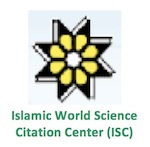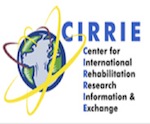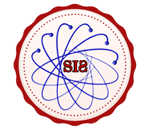Introduction
Women compose a major population group in any society that have been studied separately in recent decades due to their specific sexual, social, economic, and cultural features. In fact, many of today’s universities have women research centre [1]. Women make up half of the country’s population, and their potentials, abilities, and damages should not be overlooked [2]. Identity is one of the complex concepts insocial sciences that is difficult to reach aconsensus on a clear definition of it [3]. Giddensbelieves that we have ideas of ourselves, andothers also bestow ideas of ourselves upon us [4]. Erikson, the main founder of this concept,considers identity as a strong structure inadulthood. Discussions on the concept of identityfall into a long history, and there have beendebates since ancient times. As a matter of fact, there has been a written phrase on the temple of Delphi in ancient Greece: "Know yourself" [5]. Language, religion, clothes, aesthetic interests, recreation and entertainment, sports, nutrition, etc. are cultural items that give a meaning to the life of each group, creating within group similarities and between group differences. Accordingly, a group or even an individual can create for itself multiple identities in different situations [6]. Identity development is known as a complex lifelong process that is rooted in the nature and culture of an individual [7].Women’s individual identity comprises of a set of social identities and includes religious, sexual, group, ethnic, and national identities. Today, this identity is under the influence of globalization and its components [8]. By the rapidity of globalization, the influx of communication technologies, the very strong role of the media, and concomitant changing of women’s lifestyle from traditional to modern, as well as the impact of modernization, the increase of women’s group relations in society following modern socialization, achieving the traits of modern identity, becoming aware of their rights, and raising their levels of literacy and work interactions, women have taken on a more prominent role in societies and have changed their lifestyles. Women have been trying not to limit their identity to traditional expectations and roles and to join men in playing social roles, so that gender roles are becoming more and more symmetrical. The concept of identity deals with its own issues and complexities in Iranian society as this society is changing, and the influence of modernity has brought multiple sources for women to seek for identity. In this regard, one of the most important problems of women is identity crisis and their sexual role. In the field of reproductive health, various conditions can affect women’s identity. In many cultures, becoming a mother is a key aspect of a woman’s role, and having no children is personally, socially, and economically destructive for women. In other words, female infertility can be considered as a life crisis, identity crisis, a chronic illness, or a combination of all of these [9,10]. Moreover, cancer diagnosis is among the conditions causing a crisis in women’s and their families’ lives. In most societies and cultures, breasts are considered female organs, and because Breast Cancer (BC) targets female identity, it severely inflicts the patient and her family psychologically. The women undergoing hysterectomy may experience mental and psychological changes along with their physical changes. Therefore, the loss of the uterus gives the woman the feeling that she has lost part of her identity or femininity.The problems and diseases mentioned above all affect female identity and femininity, but the sources do not provide a clear definition of female identity [11-13].
This study aimed to determine the basic components of female identity in reproductive health to add to our knowledge in this area and to provide a basis for extensive research on the dimensions of female identity in women with different conditions. Our results can also be regarded as a basis for promoting interventional strategies to nail this purpose.
Literature Review
This systematic review followed the guidelines established by the Preferred Reporting Items for Systematic Reviews and Meta-Analysis (PRISMA) (14). We here explored the sources addressing the concept of female identity and its features.
Data sources and literature search
In this study, the concept of "female identity in reproductive health" was explored. To clarify the concept and provide its operational definition. A comprehensive search was conducted in Persian and international databases without a time limit to determine all the uses of the concept that one can discover. The search was performed using valid English keywords female identity, feminine identity, gender identity, women's identity, reproductive health, questionnaire, instrument, scale, mixed method study, qualitative method (MeSH terms) and their Persian equivalents and their possible combinations in the titles of articles. Finally, 579 articles were obtained (Tables 1 and 2).
| Database |
Time period |
Date of conducting the search |
| PubMed |
1990 to December 27, 2020 |
27 December, 2020 |
| Web of science |
All years |
27 December, 2020 |
| Scopus |
All years |
27 December, 2020 |
| Embase |
1974 to December 28, 2020 |
28 December, 2020 |
| Iran Medex |
All years |
22 December, 2020 |
| Magiran |
All years |
22 December, 2020 |
| Google Scholar |
All years |
22 December, 2020 |
| SID |
All years |
22 December, 2020 |
Table 1. The databases used for literature search.
| ("Female identity "(title) or (" feminine identity" (title) or gender identity (title)) or women's identity (title))) and (reproductive health (title)) |
| Title abs key ("female identity" or "feminine identity" or gender identity or women's identity and reproductive health) |
| ("female identity" (title/abstract)) or ("feminine identity" "(title/abstract)) or gender identity " (title/abstract))or women's identity "(title/abstract)) and (reproductive health " (title/abstract))) |
| ("female identity" (title/abstract)) or ("feminine identity" "(title/abstract)) or gender identity " (title/abstract)) or women's identity "(title/abstract)) and (reproductive health " (title/abstract))) and (tool(title/abstract) |
| Female identity or "feminine identity" or gender identity or women's identity and reproductive health and scale or tool or instrument or questionnaire |
| ("female identity" (title/abstract)) or ("feminine identity" "(title/abstract)) or gender identity " (title/abstract)) or women's identity "(title/abstract)) and (reproductive health " (title/abstract))) and "tool" (title/abstract) or "questionnaire" (title/abstract) or "scale" (title/abstract) |
Table 2. The search strategy and word combinations used for literature search in international databases.
Study selection
Inclusion criteria encompassed being published in English or Persian, the presence of keywords in either the title, abstract, the study designs of qualitative, quantitative, combinational, or review, and full-text availability. Duplicated articles and letters to editors were omitted. Duplicates were identified and removed by Endnote reference management software.
Quality assessment
In this step, after executing inclusion and exclusion criteria, the Quality Assessment of Diverse Studies (QuADS) tool was used to evaluate the quality of the articles [14]. Accordingly, none of the 55 articles screened based on PRISMA fell into the low-quality category, and all of them, which were in line with the objectives of the research, were analyse. All titles, abstracts, and full-texts were independently screened by two authors (ZS and MD)to ensure their agreement with the inclusioncriteria. Disagreements were discussed andresolved by consensus.
Data extraction
In this study, in order to extract the features of the concept, the text of the articles was read carefully several times, and the words and phrases reflecting the characteristics of the concept were extracted. Based on the frequency of repetitions, 533 initial codes were extracted in this step. Then the codes were categorized into groups based on their similarities and differences to achieve the different dimensions of the concept.
Ethical considerations
As this study did not involve direct human intervention, it was not reviewed by the institutional ethics committee. However, Helsinki declaration guidelines were followed in all stages of the study.
Results
The characteristics of the concept of female identity in reproductive health appeared in three themes: adaptation to the changes of the identity concept based on individual, temporal, and spatial conditions, facing life crises, and peace arising from constructive interactions. Details of these themes have been noted in Table 3.
| Themes |
Categories |
Subcategories |
| Adaptation to the changes of the identity concept based on individual, temporal, and spatial conditions |
Adequate fulfillment of traditional feminine role |
Care providing and nurturing role in the family |
| The acceptance of sexual roles defined in society |
| Prioritizing others over oneself |
| Coordination with modern feminine roles |
Social identity and achieving independence |
| Individual prosperity |
| Asexual view towards women |
| Creating a balance between conflicts and contradictions of sexual roles |
Gender stereotypes |
| Values transformation |
| Facing life crises |
Physical changes |
Diseases |
| Loss of fertility |
| Emotional pressure |
Loss of loved ones |
| A change in human relationships |
| Social changes |
Accidents and disasters |
| Migration |
| Economic concerns |
Occupational concerns |
| Financial hurdles |
| Peace arising from constructive interactions |
A sense of dignity as a woman |
Being seen in cultural and social aspects |
| Participation in political affairs |
| Having an appropriate position in the family |
| Personality traits |
| Religion’s view on women |
| Satisfaction with being with the spouse |
Intimacy and emotional support |
| Sexual satisfaction |
| Balanced influence by the media and friends |
Satisfaction with the body’s appearance in accordance with induced beauty norms |
| Conscious selection of media content and friends |
| Alignment of one’s values with social laws |
Reproductive laws |
| Marriage laws |
| Employment laws |
| Judicial laws |
Table 3. Themes, categories, and subcategories representing the traits of female identity in reproductive health in the theoretical stage of the study.
Adaptation to the changes of the identity concept based on individual, temporal, and spatial conditions
This theme includes three categories and eight subcategories. The main categories included the adequate fulfilment of traditional feminine roles, coordination with modern feminine roles, and creating a balance between conflicts and contradictions of sexual roles.
Facing life crises
This theme consisted of four categories and eight subcategories; the main categories were physical changes, emotional pressure, social changes, and economic concerns.
Peace arising from constructive interactions
This theme includes four categories and 13 subcategories. The main categories comprised a sense of dignity as a woman, satisfaction with being with the spouse, balanced influence by the media and friends, and alignment of one’s values with social laws.
Discussion
The findings of the present study showed that the characteristics of the concept of female identity in reproductive health include adapting to changing the concept of identity based on individual, temporal and spatial conditions, facing life crises and peace arising from constructive interactions.
Adaptation to the changes of the identity concept based on individual, temporal, and spatial conditions
This theme represents one of the main features of female identity that changes the concept of identity based on individual, temporal and spatial conditions. From the proper performance of traditional female roles such as the role of care and upbringing in the family to harmony with modern roles such as social identity and independence, individual flourishing and asexual view of women and balancing the conflicts and contradictions in the roles gender like gender stereotypes and changing values.
In fact, identity is an individual and unstable thing, and based on it, a group or an individual can create multiple identities for themselves in different situations. Given that societies are changing, from cultural, ideological and value structures to beliefs, goals, needs, motivations and commitments of individuals, so the adaptation of women in society with changing circumstances arises from the desirable characteristics of female identity. These results are consistent with other studies. As Amani states: women play a significant role in dealing with household chores. Although they have no legal obligation in this regard, the achievement of a loving atmosphere in the family requires that both men and women endeavour together to bring the family peace and prosper and provide an intimate place for nurturing the next generation [15].
Alireza Nejad and Cordoneanu stated,in today’s society, a modern woman is characterized by qualities such as independence, education, contemplation of life issues, cooperation and participation with the husband instead of submission, contribution to political, social, cultural, and economic activities based on one’s abilities, autonomy, and desire to reach professional climax.
Rawdrad showed in the views of single women, the desired identity is what displays women as independent creatures and equipped with high mental and physical strength.
Cordoneanu and Afolabi emphasized that other features of modern women are more effective decision making, self-knowledge, desire for one’s personal interests and needs to be seen, freedom, self-fulfilment, or at least being seen in society. Female identity relies on a woman’s ability to become herself (originality) and to objectify herself and the surrounding world (creativity).
Consistent with our study of the asexual view of women, Alireza Nejad Stated that, this item encompasses a non-sexual view on the duties, responsibilities, and rights of men and women,
According to Rawdrad such as requires rethinking about the necessity of accompanying the wife in household chores and assigning people to managerial jobs based on their qualifications instead of gender.
Attarzadeh says about this, according to Islam, women and men have equal rights and responsibilities, but this does not mean that these rights and responsibilities are the same [16-20].
Regarding another finding of our study, which is to balance conflicts and contradictions in gender roles such as gender stereotypes and heterogeneity of values, several studies have stated that gender stereotypes about women covers all the negative and false perceptions that society always expects from women. For example, the fact that women are obliged to think and behave in a certain way, otherwise they will be punished with negative judgments and rejection. Stereotypes such as being weak, emotional, plain, and jealous, having low self-esteem, receiving respect based on physical characteristics, having a husband and sexual desires, having a uterus, and ability to conceive a child are recognized as credible aspects of female identity.
Various studies have shown that over time and with cultural changes in a society, social values also reshape. Desirable identities are defined according to the values that govern society, which is also true about female identity. For example, in a specific period, banning of Islamic hijab is considered equal to freedom for women and mingling with the community. Another example is the different meaning of a woman’s beauty over time and in different cultures.
Facing life crises
The occurrence of unpredictable events, accidents, economic, social, and political crises, etc. is a fact that humanity has been familiar with throughout history.
The findings of the present study showed physical changes, emotional pressure, social changes, and economic concerns can affect female identity, making life difficult for a woman.
Similarly, other studies have shown that physical problems affect female identity. LotfiKashani and thru sell stated that the breast and uterus are important parts of a woman’s body. Female identity, femininity, sexual desires, and physical and sexual attractiveness have strong links with nurturing and motherhood. Therefore, the deformity or loss of these organs is often interpreted as the loss of female identity. And several studies have shown that conflicts between the husband and wife, weak and unsteady marital relations, divorce, temporary marriages, and infrequent communication with relatives and friends are among the factors imposing emotional pressure on women.
Other findings of the present study are the effects of social changes such as accidents and disasters and migration on female identity. In this regard, Ayaz stated displacement and helplessness caused by war place women in a difficult situation. War is an issue that inflicts the whole family and creates many challenges.
Based on the findings of this study, economic problems are among the issues that can make life more difficult for families, especially for women. Occupational concerns and financial hurdles are among the most important economic turbulences.
In this regard, various studies have stated that market instability, increased job related risks, the barriers of employing women with criminal records, being forced to work part time or even quit working because of having to take care of children, being obliged to enter the market after children’s reaching puberty, and having to do daily-wage jobs or work as reserve labourers are among the most important occupational concerns of women.
Peace arising from constructive interactions
According to the findings of the present study, a sense of dignity as a woman, satisfaction with cohabitation, balanced influence of the media and friends, and the alignment of individual values with the laws of society are some of the things that create peace by making a woman have a sense of satisfaction with female identity. Similarly, other studies have shown that one of the factors that makes women feel dignity and encourages them to participate in social, cultural, economic, industrial, and agricultural activities, like men, is being aware of society’s events and current issues and having a desire to interact with others and participate in team work. Women, as half of society’s structure, ought to fulfill their duties in every social and cultural issue of the community.
According to the findings of the study, one of the things that make a woman feel dignity is having a proper place in the family. Various studies have confirmed this and stated that another item causing women to feel dignified is having an appropriate position in the family. During deployment and in life, women see themselves in various positions. A woman possesses an extraordinary position as the wife, mother, and daughter, and in Islamic communities, particularly, women are granted with extreme social respect. In religious education, the role of mother is a value that has been placed on women due to their unique biological and psychological characteristics. Women can also experience being a sister to a brother or the bride to a family.
According to the findings of the study, another thing that makes a woman feel comfortable is the satisfaction of living together. In this regard, various studies also state that a feeling of intimacy with the husband and receiving emotional support from him can lead the woman to feel valued in life and to achieve peace. Intimacy means sharing with each other the deepest feelings, dreams, desires, concerns, and joys. Expressing intimacy, excitement, and warm feelings with love, helping the wife in doing her specific tasks (daily chores, etc., particularly during illness, and appreciating the mother by the husband and children will positively affect women’s feeling of dignity and self-worth.
Marrying and having sexual activity are two key elements of female identity. Besides having intercourse and reaching orgasm, the definition of sexual satisfaction encompasses the existence of positive sexual experiences such as good feeling and mutual satisfaction regarding the relationship. Meanwhile, it is important to pay attention to the sexual needs of the spouse. In studies, expressing sexuality has been noted as a part of presenting an alpha female identity.
Niknam, et al. state that paying attention to the body’s appearance in a balanced and socially conventional way indicates good mental health, causing people to feel calm and peaceful.
Other studies in this regard state that the human differs from other creatures of God in terms of authorization. Choices that are made by knowledge, consultation, and contemplation are less likely to be changed. Today, in the era of the abundance of communication and information technologies, the type of the media content should be selected by appraising the credibility and quality of the source by critical thinking, a skill that teaches us not to allow any information or message into our minds. The selection/rejection of media content or accepting a part or the whole message based on its reflections, satisfaction with the media content, and even learning from friends and peers based on the principle of understanding are signs for an individual’s good mental health and satisfaction with one’s identity.
Other findings of the present study are the alignment of individual values with the laws governing society, including fertility laws, marriage laws and employment laws.
There are different types of legal systems in different countries. In Islamic countries, Islamic rules are the mainstay of legislation. It should be noticed that laws should be in line with people’s demands. In a government where democracy rules, people are eager to follow the law because they consider this as an act of submission to their own rules and regulations. When the law is set by the people who must obey it, justice seems to be fulfilled in the best possible way. In fact, justice becomes true when all members of a society equally receive all civil and political rights and have easy access to economic and social opportunities. In this way, a person finds his/her own value and attains peace in life.
John Ghorban, et al. say: Reproductive rights refer to the legal rights and freedom related to reproduction and reproductive health. Maternity leave and breastfeeding leave granted to employed women can cause them full satisfaction with their female identity and motherhood because they will be able to spend more time with their neonates and children.
Ayaz states about marriage laws thatWedlock is the legal term for marriage, which in Iranian society, it refers to a contract by which a man and a woman start living together. In Islamic law, the legal issues of marriage are highly important as they are the pillars of the formation of the family. The right to divorce is one of the issues that if it is observed as stated by the law, it will cause a woman to be more satisfied with herself and her life. A woman’s having the right to divorce does not mean the weak foundation of marriage, but it reflects the strength of the marital bond and the foundation of the family.
Regarding employment laws, various studies state that in today’s world, women’s employment is a critical issue. In fact, the degree of development of a country is reflected by the value that women receive in that country. Therefore, it is necessary to observe women’s rights when hiring them, and husbands should also avoid forcing their wives to quit their jobs. Legal gender gaps and gender division in the work environment should be avoided so that working women, similar to male counterparts, are satisfied with their employment status and female identity.
Conclusion
According to the results, female identity in reproductive health was found to be a dynamic, complex, and multidimensional concept encompassing a combination of traits, including adaptation to the changes of the identity concept based on individual, temporal, and spatial conditions, facing life crises, and peace arising from constructive interactions. Through the proper fulfilment of traditional feminine roles, coordination with modern feminine roles, creating a balance between the conflicts and contradictions between these roles, and Facing physical changes, emotional pressures, social alterations, and economic turbulences, a woman is able to achieve peace. In addition, by nurturing a sense of dignity as a woman, satisfaction with accompanying the spouse, effectively communicating with others, being influenced by the media and friends in a balanced manner, aligning one’s values with governing laws in society, and empowering oneself via creating self-motivation, self-support, and self-confidence, as well as by boosting one’s knowledge and skills, attaining independence, and coping with conflicts, a woman can nail her desirable female identity in society. Personal, familial, socio-cultural, political, and religious and spiritual factors contribute to the development of female identity, leading to positive self-concept.
Limitations and Strengths
The limitation of the study was that it only included the texts written in English or Persian, and publications in other languages were not included. However, we managed to obviate any selection bias when including the studies.
Declaration of Conflicting Interests
The author (s) declared no potential conflicts of interest with respect to the research, authorship, and/or publication of this article.
Acknowledgments
We thank the vice chancellor for research at the Tehran and Ilam universities of medical sciences.
References
- Cait CA. Parental death, shifting family dynamics, and female identity development. Omega: J Death Dying. 2005;51(2):87-105.
[Crossref] [Google Scholar]
- Nezami N, Dashti F, Alilou L, Heidari S. Comparison of death anxiety in women with reproductive and gastrointestinal cancers and predicting factors. Scientific J Nurs. 2018;4(1):17-28.
[Google Scholar]
- Farooqi YN. Depression and anxiety in patients undergoing hysterectomy. J Pakis Psych Soc. 2005;2(1):13-6.
[Google Scholar]
- Harrison R, Jones B, Gardener P, Lawton R. Quality Assessment with Diverse Studies (QuADS): An appraisal tool for methodological and reporting quality in systematic reviews of mixed or multi-method studies. BMC Health Serv Res. 2021;21(1):1-20.
[Crossref] [Google Scholar] [PubMed]
- Cordoneanu F. Identity character and social hypostases of Christian-orthodox femininity. Procedia Soc and Behavioural Sci. 2014;137:205-10.
[Crossref] [Google Scholar]
- Hagan TL, Cohen SM. A literary analysis of global female identity, health, and equity. ANS Adv Nurs Sci. 2014;37(3):235-48.
[Crossref] [Google Scholar] [PubMed]
- Reis N, Engin R, Ingec M, Bag B. A qualitative study: Beliefs and attitudes of women undergoing abdominal hysterectomy in Turkey. Int J Gynecol Cancer. 2008;18(5):921-8.
[Crossref] [Google Scholar] [PubMed]
- Soderberg M, Christensson K, Lundgren I, Hildingsson I. Women's attitudes towards fertility and childbearing a study based on a national sample of Swedish women validating the Attitudes to Fertility and Childbearing Scale (AFCS). Sex Reprod Healthc. 2015;6(2):54-8.
[Crossref] [Google Scholar] [PubMed]
- Thibeault C, Sabo BM. Art, archetypes and alchemy: Images of self following treatment for breast cancer. Eur J Oncol Nurs. 2012;16(2):153-7.
[Crossref] [Google Scholar] [PubMed]
- Josselson RL. Psychodynamic aspects of identity formation in college women. J Youth Adolesc. 1973;2(1):3-52.
[Crossref] [Google Scholar] [PubMed]
- Ranjitha G, Unnithan AB. Self and identity of being an ideal woman: An exploratory qualitative study. IIM Kozhikode Soc Manag Rev. 2018;7(1):33-44.
[Crossref] [Google Scholar]
- Thrussell H, Coggrave M, Graham A, Gall A, Donald M, et al. Women’s experiences of sexuality after spinal cord injury: A UK perspective. Spinal Cord. 2018;56(11):1084-1094.
[Crossref] [Google Scholar] [PubMed]
- Hashizume Y. Gender issues and Japanese family centered caregiving for frail elderly parents or parents in law in modern Japan: From the sociocultural and historical perspectives. Public Health Nurs. 2000;17(1):25-31.
[Crossref] [Google Scholar] [PubMed]
- Manassen A, Verkuyten M. Examining Identity Intersectionality: Thai Marriage Migrants in the Netherlands. Int Rev Soc Psychol. 2018;31(1).
[Crossref] [Google Scholar]
- Dysvik E, Sommerseth R. A man could never do what women can do: Mental health care and the significance of gender. Patient Prefer Adherence. 2010;4:77-486.
[Crossref] [Google Scholar] [PubMed]
- Gao HC, Mittal V, Zhang YL. The Differential effect of local global identity among males and females: The case of price sensitivity. J Mark Res. 2020;57(1):173-91.
[Crossref] [Google Scholar]
- Sumra MK. Masculinity, femininity, and leadership: Taking a closer look at the alpha female. PLoS One. 2019;14(4).
[Crossref] [Google Scholar] [PubMed]
- Niknam M, Khodi Z, Khodi M. The relationship between body image, self-concept and happiness among women seeking cosmetic surgery in Tehran. JSSU. 2019;27(1):1110-1117.
[Crossref] [Google Scholar]
- Oldrup H. Women working off the farm: Reconstructing gender identity in Danish agriculture. Sociologia Ruralis. 1999;39(3):343.
[Crossref] [Google Scholar]
- Bokir S, Hashim RS, Satkunananthan AH, Olmedo E. Identity experiments in two female photographers of yemeni women. Akademika. 2020;90(3):3-13.
[Google Scholar]





























